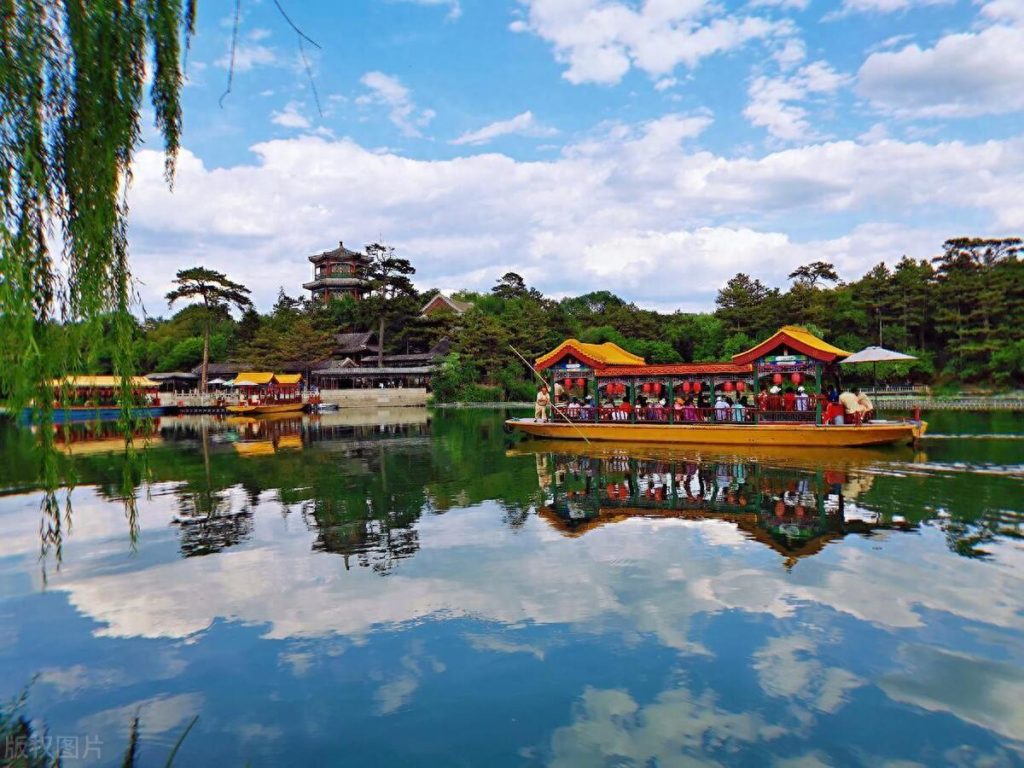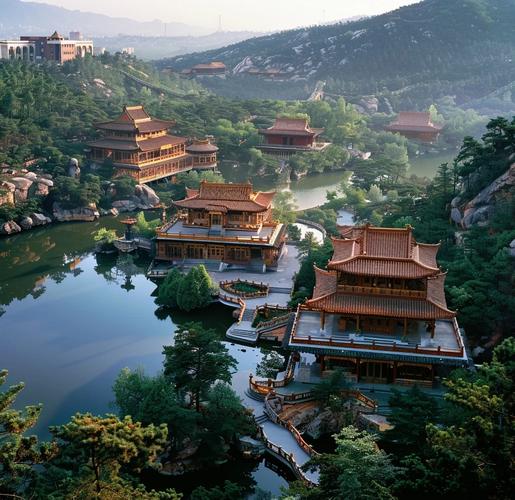Chengde Mountain Resort: A Royal Retreat in Northern China
Tucked away in the rolling hills of Chengde, Hebei Province, the Mountain Resort stands as a masterpiece of Chinese landscape gardening and a window into the country’s imperial past. Unlike the grand palaces of Beijing, this 18th-century retreat offers a serene blend of man-made elegance and unspoiled nature—where emperors once escaped the sweltering summer heat, held diplomatic gatherings, and found solace in the quiet of the mountains. For travelers seeking more than just landmarks, it’s a place to wander through time, where every pavilion, lake, and pine tree tells a story of power, culture, and harmony with the land.

The Soul of the Resort: History & Landscape
Commissioned during the Qing Dynasty (1703–1792) under Emperor Kangxi and expanded by his grandson Qianlong, the Mountain Resort was more than a summer villa—it was a political and cultural hub. It served as the imperial court’s “summer capital,” where emperors received foreign envoys (most notably from Mongolia and Tibet) and managed frontier affairs. This dual role is reflected in its unique design: the resort combines two distinct styles— the grand, symmetrical architecture of Han Chinese palaces in the southern section, and the rugged, naturalistic landscapes of northern China in the north.
Covering a staggering 5.64 square kilometers (about 2.18 square miles), the resort is divided into four parts: the Palace Area (where the imperial family lived and worked), the Lake Area (a network of tranquil lakes dotted with pavilions), the Mountain Area (rolling hills with winding paths and panoramic views), and the Plain Area (grasslands that mimic the Mongolian steppe). Together, they create a microcosm of China’s diverse geography—one reason it was inscribed as a UNESCO World Heritage Site in 1994.

Your Ultimate Travel Guide
Best Time to Visit
True to its name, the Mountain Resort shines in summer (June–August), when temperatures hover around 22–26°C (72–79°F)—a welcome escape from the heat of major cities like Beijing or Tianjin. Spring (April–May) brings blooming flowers and fresh greenery, while autumn (September–October) paints the mountains in fiery red and golden hues, perfect for photography. Winter (November–March) is quieter and colder, but the snow-dusted pavilions and frozen lakes offer a magical, fairy-tale atmosphere—ideal for travelers who prefer fewer crowds.
How to Get There
Chengde is easily accessible from Beijing, the most common starting point for international visitors: – High-Speed Train: The fastest and most convenient option. Trains run from Beijing Chaoyang Station to Chengde South Station every 1–2 hours, with a travel time of 1.5–2 hours. Tickets can be booked via the official China Railway app (12306) or at the station (note: you’ll need a passport for ticket purchase). – Bus: Buses depart from Beijing’s Liuliqiao Long-Distance Bus Station to Chengde Bus Station, taking 3–4 hours. This is a more budget-friendly choice but less comfortable than the train. – Private Car/Taxi: A private car from Beijing takes about 3 hours, offering flexibility if you want to stop at other attractions (like the Eastern Qing Tombs) along the way.

Entry Tickets & Practical Tips
The resort uses a combined ticket system for the Palace Area and the Outer Temples (a group of magnificent temples surrounding the resort). Prices vary by season: – Peak Season (April 1–October 31): 145 CNY (includes Palace Area + Mountain Resort + Outer Temples) – Off-Season (November 1–March 31): 120 CNY (same inclusions) Tickets can be bought online via the official “Chengde Mountain Resort” WeChat mini-program (look for the English version) or at the ticket office at the resort’s main entrance. Note that the resort is large—wear comfortable walking shoes, bring sunscreen and a hat in summer, and a warm jacket in winter. Free Wi-Fi is available at major pavilions, and there are rest areas and cafes scattered throughout.
Must-See Spots
- Palace Area (Zhengong): Start here to get a sense of imperial life. The main buildings—like the Hall of Benevolence and Longevity (where emperors held audiences) and the Hall of Joy and Peace (the imperial bedroom)—are decorated with intricate wood carvings, silk tapestries, and ancient artifacts. Don’t miss the imperial kitchen, where you can see how royal meals were prepared.
- Lake Area (Shuicheng): Take a wooden boat (60–80 CNY per boat, fits 4–6 people) to explore the interconnected lakes—this is the most romantic way to experience the resort. Highlights include the “Lotus Flower Market” (a pavilion where emperors enjoyed lotus views) and “Mirror Lake,” whose calm waters perfectly reflect the surrounding pavilions like a mirror.
- Mountain Area (Shancheng): Hike or take a shuttle bus (40 CNY round-trip) to the top of Putuo Zongcheng Temple (one of the Outer Temples). From here, you’ll have a bird’s-eye view of the entire resort and the city of Chengde below. The temple itself is a stunning replica of Tibet’s Potala Palace, with golden roofs that glow in the sun.
- Plain Area (Mocheng): Walk through the grasslands and pine forests that once served as imperial hunting grounds. Look for the “Ten-Thousand-Tree Pavilion,” where you can sit and listen to the wind rustling through the leaves—just as emperors did centuries ago.

Local Food to Savor
After a day of exploring, treat yourself to Chengde’s unique cuisine, which blends Han and Mongolian flavors: – Chengde Braised Pork Ribs: Tender, savory ribs cooked with local spices— a staple at local restaurants. – Milk Tea (Nai Cha): A Mongolian-inspired drink, creamy and slightly salty—perfect for warming up in winter. – Grassland Lamb Skewers (Yang Rou Chuan): Juicy and flavorful, made with fresh lamb from the nearby grasslands. Head to “Yipinxiang” (a famous local restaurant near the resort) for authentic dishes, or try street food at the night market near Chengde South Station.
Where to Stay
For convenience, stay near the resort’s main entrance (Zhengmen). Options range from luxury hotels to budget guesthouses: – Luxury: Crowne Plaza Chengde Mountain Resort—offers spacious rooms, a spa, and views of the resort. – Mid-Range: Hanting Hotel (Chengde Mountain Resort Branch)—clean, comfortable, and within walking distance of the entrance. – Budget: Local guesthouses (“nongjiale”)—affordable, with home-cooked meals and a chance to interact with locals.
One-Day vs. Two-Day Itinerary
– One-Day: Focus on the Palace Area, Lake Area, and Putuo Zongcheng Temple. Take a morning train from Beijing, explore the core spots, and return to Beijing in the evening. – Two-Day: Spend the first day in the resort (Palace + Lake + Plain Areas) and the second day visiting the Outer Temples (Putuo Zongcheng, Puning Temple, and Xumi Fushou Temple) and exploring Chengde’s old town. This allows you to take your time and avoid rushing.
Final Thoughts
The Chengde Mountain Resort is more than a tourist attraction—it’s a place where history breathes. Whether you’re wandering through imperial halls, rowing on a quiet lake, or gazing at mountain views from a temple rooftop, you’ll feel a connection to the emperors, scholars, and artisans who shaped this extraordinary place. Unlike the bustling streets of Beijing or Shanghai, Chengde offers a slow, peaceful travel experience—one that lets you savor the beauty of China’s past and present. Come with an open mind, and let the mountains and lakes tell you their stories.
